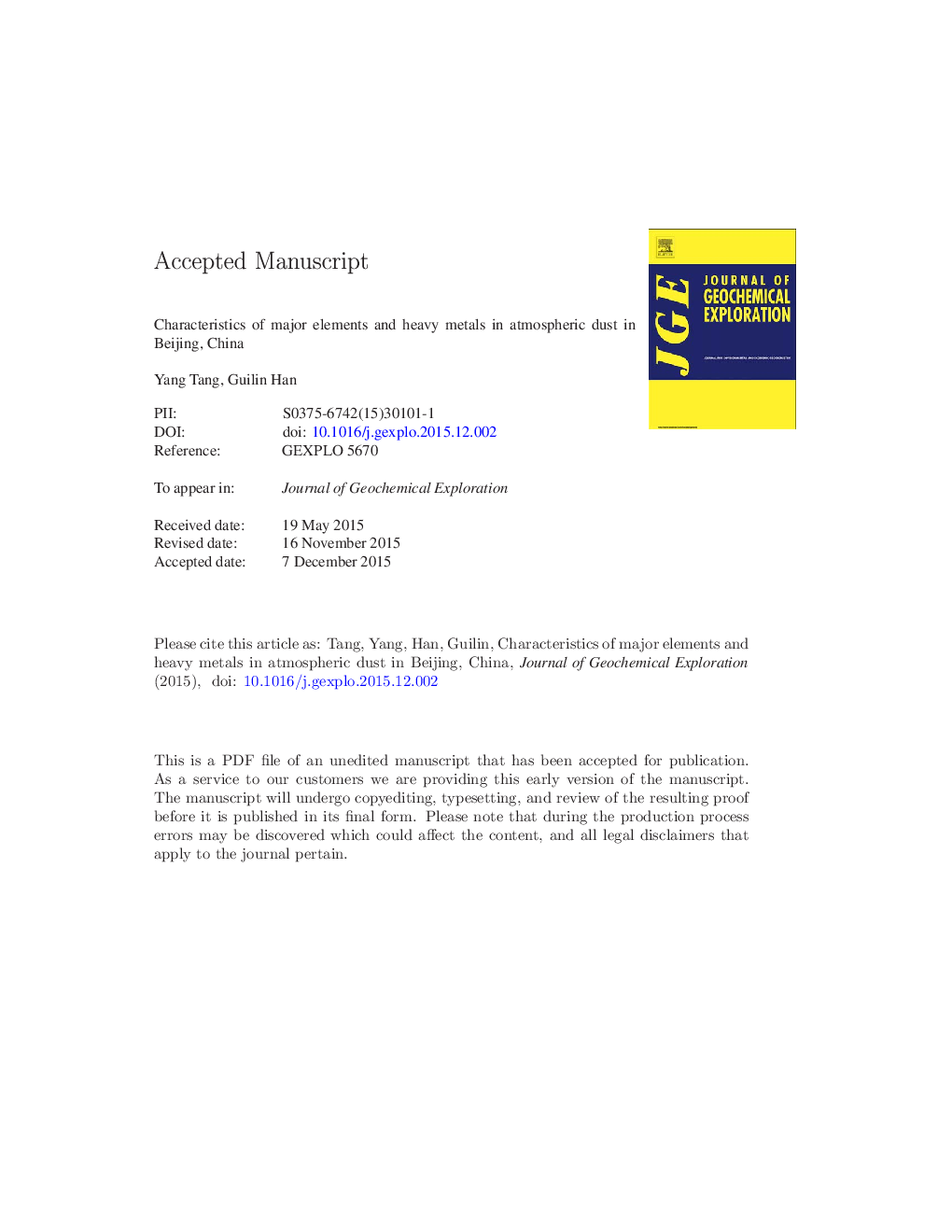| Article ID | Journal | Published Year | Pages | File Type |
|---|---|---|---|---|
| 5754461 | Journal of Geochemical Exploration | 2017 | 29 Pages |
Abstract
Atmospheric dust is directly related to air quality and human health in urban areas. In this study, monthly atmospheric dust of fifteen major elements and heavy metals was measured from March 2008 to February 2009 in Beijing, China, in an effort to determine both natural and anthropogenic sources. The results showed average concentrations of Ca, Pb, Zn, and Cu in atmospheric dust were higher than those of topsoil. Cluster analysis suggested that the elements be divided into three groups: Ca, natural, and anthropogenic elements. Seasonal variations of the elements in dust showed that Ca and the anthropogenic elements of Cu, Zn, Pb were relatively higher in summer and autumn than in winter and spring due to the absence of dusty weather. Enrichment factors (EF) indicated that most of the dust was enriched in Ca, Zn, Pb, Mg, Cu, with EF values > 5; EF values were higher in summer and autumn months than in other months. The atmospheric dust in Beijing is affected by both natural and anthropogenic sources, which have different sources in different seasons. In spring and winter, atmospheric dust arises mainly from natural sources of dusty weather, while the atmospheric dust in summer and autumn was dominated by anthropogenic sources due to the lack of dusty weather.
Related Topics
Physical Sciences and Engineering
Earth and Planetary Sciences
Economic Geology
Authors
Yang Tang, Guilin Han,
